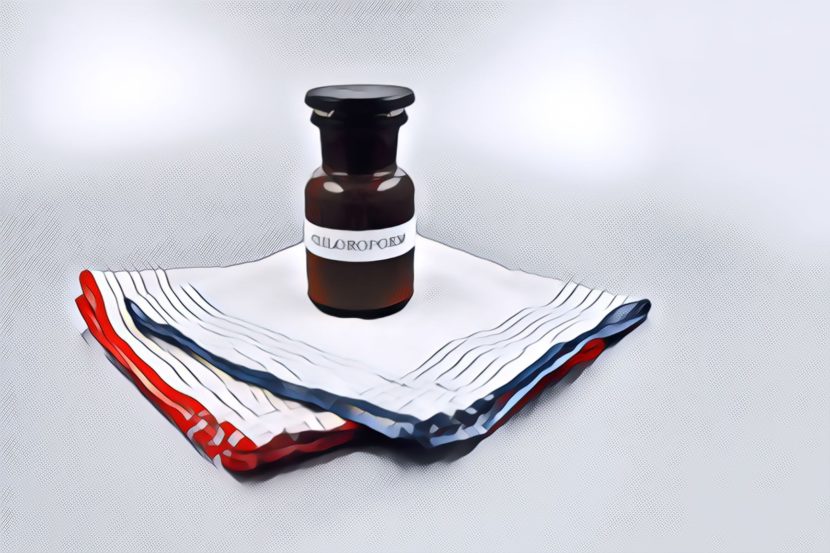Crouched, waiting in the shadows, our hero springs. He comes up behind the guard and places a chloroform-soaked rag over the guard’s face.
The guard gasps and inhales the chemical deeply. He faints.
Our hero pulls the guard’s body to the side in the shadows. He opens the door and leaves.
Chloroforming someone is a plot device found in both old and relatively new action and comedy movies. Sometimes the chloroforming is accidental in the plot, and sometimes intentional. If you’ve spent a good portion of your life watching movies and TV shows, it’s something you’ve probably seen at least a couple of times. If the screenwriter needs to put a character to sleep and can’t have a protagonist kill them it’s one of the ways they’ll use. Chlorforming is used almost as commonly as knocking someone out by hitting them in the head.
There’s a difference between real life and stories. Just as hitting someone in the head with something hard doesn’t usually cause them to sleep, chloroforming yourself or someone else isn’t a good way to get some sleep. Getting hit in the head can cause a brain injury, like a bruise on the brain. Hitting them in the head will often momentarily stun them and cause them to strike back. It causes a pool of blood on the brain and a lot of pain; not a good thing.
Most people know about the pain and the bleeding inside the skull that comes from getting hit upside the head. It’s anything but a tempting option for getting to sleep.
Chloroform is more of an unknown when it comes to sleep.
Chloroform is a poison
Chloroform, also known as trichloromethane, is a colorless organic compound with a sweet smell. It’s a dense liquid. Historically, chloroform was used as an anesthetic. Its main use today is in the production of chlorodifluoromethane, a refrigerant and solvent.
Chloroform is also used as a laboratory solvent. It has low reactivity, and low volatility, and can mix with most organic compounds.
It’s also easy to get.
It’s not a good sleep aid
The effect of chloroform increases depending on the dosage. In small doses, chloroform can cause someone to feel tired and sleepy but not necessarily put them to sleep. With increasing dosage, someone can quickly lose consciousness and feel no pain or sensation. In higher doses, it can lead to difficult breathing, and complete muscle relaxation which leads to paralysis of the chest muscles, which can often be fatal.
While it was used to put people to sleep for operations over a hundred years ago, it was replaced fairly quickly with ether. Ether has fewer disadvantages.
Relaxation is usually good. Too much relaxation, so much relaxation that you stop breathing, is bad and that’s why you shouldn’t have someone chloroform you for sleep.
Also on the blog:
James Cobb RN, MSN is the founder of the Dream Recovery System, a website with a laser-like focus on sleep and dream journaling.
We use some affiliate links in the blog. If you click on a link and make a purchase, we may receive a commission. This arrangement doesn’t affect any opinions about anything.
